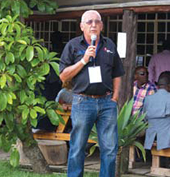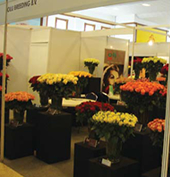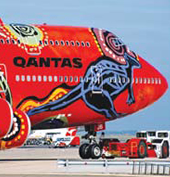Featured Past Articles
 Kenya has been part of the international supply base over the past 20 years with the majority of the fruit going to France and Holland. In 2016, avocado contributed KES4.63 billion from 246,057 tons of fruits accounting for 8% by value of the fruit sub-sector. The value increased form 4.45Billion in2015 to 4.63 in 2016 which was a 4.2% increase from 2015. This was due to improved prices in the international market as well as opening of the Russian market that demands high volumes of Fuertes avocados which were not very popular in the European market.
Kenya has been part of the international supply base over the past 20 years with the majority of the fruit going to France and Holland. In 2016, avocado contributed KES4.63 billion from 246,057 tons of fruits accounting for 8% by value of the fruit sub-sector. The value increased form 4.45Billion in2015 to 4.63 in 2016 which was a 4.2% increase from 2015. This was due to improved prices in the international market as well as opening of the Russian market that demands high volumes of Fuertes avocados which were not very popular in the European market.
The area under production increased from 10,383 Ha in 2015 to 11,017 in 2016 a 6.1% change that was attributed to planting of new orchards in non-traditional areas of the rift valley while production increased from 230,984 tons to 246,057 in 2017 representing 6.6% increase. The leading county was Murang’a that accounted for 53% by value of produce followed by Kisii, Kiambu and Nyamira that contributed 11%, 9% and 4% respectively of the total. The factors that led to a high value in Murang’a were county government intervention in marketing as well as inclusion of Kakuzi avocado data that was previously unreported. Although the avocado exports have marked an increased growth to the EU market, there were a host of constraints and challenges faced by the Kenya avocado export sector.
Challenges Faced By Kenyan Avocado Exports
Several constraints and challenges face the avocado export sector in Kenya and can be highlighted as below;
 Helping reconstruct a street boy emerging from the tough life in the Kenyan streets is not about the talk, it’s about the walk. It’s not about the what, it’s about the how. And it’s never about the will, it’s about the will. But how can you get it right if you are on the wrong part of the world? Naivasha Horticultural fair has been doing it and will do it. Their generous contribution in many areas has helped enormously. They have involved themselves in plentiful charitable projects which are of great help to the community at large.
Helping reconstruct a street boy emerging from the tough life in the Kenyan streets is not about the talk, it’s about the walk. It’s not about the what, it’s about the how. And it’s never about the will, it’s about the will. But how can you get it right if you are on the wrong part of the world? Naivasha Horticultural fair has been doing it and will do it. Their generous contribution in many areas has helped enormously. They have involved themselves in plentiful charitable projects which are of great help to the community at large.
One of the greatest secrets of the rich and mighty is giving to the needy part of what they profit. This not only goes in tandem with the saying that “For every action, there must be some reaction” but also unleashes some power that the smartest of all investors in the world has never been able to explain. This could not necessarily be a reason the hortifair but the greater need for the horticultural growers and exporters to look at the problems of the local people with a human eye.
The corporate involvement in development in this regard has been left a-new concept based on the traditional belief that it is only the government that is mandated with the responsibility of initiating development. NH Fair has in this regard created a great possibility in a short time since it takes the government quite a while to study the feasibility of any needed project before approving and hence implementing it.
The Naivasha Horticultural Fair, which marks the joint initiative of horticultural growers and related stakeholders in the industry, will be held in September. The aim still stands as convening to raise some funds towards the needy in the communities within which they operate.
 The 7th edition of IFTEX was very successful, according to all who attended. In every aspect the trade fair was rated as “excellent”. Both exhibitors and visitors were very impressed by this year’s quality and diversity of displayed flowers and creativity of stand building.
The 7th edition of IFTEX was very successful, according to all who attended. In every aspect the trade fair was rated as “excellent”. Both exhibitors and visitors were very impressed by this year’s quality and diversity of displayed flowers and creativity of stand building.
The three day event started off by the official opening held in the auditorium of the Oshwal Center in Westlands Nairobi, the place where the exhibition traditionally takes place. The guest of honor this year was the Kenyan Permanent Secretary for Trade, Dr. Chris Kiptoo. He praised all players in the flower industry for their contribution to Kenya’s export economy.
IFTEX was held this year along the newly launched FPA, a trade fair in line of the IFTEX mission, but especially set up for the vegetable, fruit and herb industry of Kenya. For this purpose about 50 growers of fresh produce were exhibiting in Fresh Produce Africa (FPA), the name of this new trade fair, and located in a separate hall adjacent to the IFTEX halls.
“Fresh Produce Africa” or FPA will be a platform for the fresh vegetables and fruits sector of Kenya and other African countries. It is totally new for two reasons: never before a trade fair with this profile has been organized in Africa and never before this concept has been implemented in Africa, a concept where international buyers are being invited to the continent where the product is being grown, as it is custom that producers go to the countries where the product is being sold, according to the organizers.
Where we are, What are the Loopholes
With a paradigm shift of investors, growers and the market place towards sophisticated technological tools in a commitment to foster productivity, quality, speed up operations, cut on costs, real time updates and access ; Regulators should adopt an up to date and competitive systems in place if 25% annual growth was to be realized within the industry.
The Kenyan government through the ministry of agriculture and ministry of foreign affairs and international trade, with the help of governmental and member based self regulatory organizations in place which are KEPHIS and KFC respectively have achieved enormous milestones when it comes to phyto-sanitary standards both locally and internationally. Through continuous self assessment, the two regulatory bodies continue to conform to the upcoming trends and gaining recognition in the international market.
Kenya’s growing importance as a global hub for trade explains why the nation has been experiencing the fastest rise in foreign direct investment in the continent.
Thrust on perishables exports According to a recent report, Kenya earned much more from flower and other perishable exports in the last three years than before. “The earnings from exports are slowly growing and a promise of a better future.
A number of multinational freight forwarders are acquiring Kenyan companies to tap into the lucrative perishables market. Recently, the world’s third largest logistics company, Japan’s Nippon Express, launched a subsidiary office in Kenya. Nippon Express has been making use of local agents for the export of home-grown (Kenyan) cut flowers and roses.
The firm announced that it will be putting in place a structure to meet the needs of customers in Kenya and the rest of East Africa, where sustained growth is expected.
 Kenya’s cut-flower industry may be set to grow once again with direct flights opening in October to the United States. Kenya’s flower growers have been anticipating the direct flights for a few years now, according to Clement Tulezi., CEO Kenya Flower Council. Kenya’s cut-flower industry has blossomed since the 1980s, and now holds the biggest market share for exports to Europe. Kenya’s flower producers are hoping direct flights set to open between Nairobi and New York City could help them put down roots in a new market — the United States.
Kenya’s cut-flower industry may be set to grow once again with direct flights opening in October to the United States. Kenya’s flower growers have been anticipating the direct flights for a few years now, according to Clement Tulezi., CEO Kenya Flower Council. Kenya’s cut-flower industry has blossomed since the 1980s, and now holds the biggest market share for exports to Europe. Kenya’s flower producers are hoping direct flights set to open between Nairobi and New York City could help them put down roots in a new market — the United States.
Kenya’s earnings from the United States horticulture market are set to rise to Sh10billion [98.6 million USD] on direct Nairobi to New York flights scheduled to start in October.
Kenya Flower Council chief executive Clement Tulezi said in an interview that the country is currently earning less than a billion from the US market.
Earnings from the horticulture sector hit Sh115 billion [1.1 billion USD] last year from Sh101 billion [996 million USD] announced in 2016. Companies licensed to export the flowers also increased to 386 from 356 in 2016.
 Kenya’s flower industry is adopting high-quality standards to grow and consolidate its market share and ward off competition from emerging flower-growing countries in an increasingly competitive global market. The internationally and locally defined quality standards are geared towards creating the Kenyan flower brand.The standards include the Kenya Flower Council Silver standard which all exporters must comply to. The KS1758 standard for flowers and ornamentals is an additional quality control measure, “which means no one should be allowed to mess up the industry.”
Kenya’s flower industry is adopting high-quality standards to grow and consolidate its market share and ward off competition from emerging flower-growing countries in an increasingly competitive global market. The internationally and locally defined quality standards are geared towards creating the Kenyan flower brand.The standards include the Kenya Flower Council Silver standard which all exporters must comply to. The KS1758 standard for flowers and ornamentals is an additional quality control measure, “which means no one should be allowed to mess up the industry.”
The making of the Kenyan Flower brand means growers are now optimizing on available resources to get the best cut flower, and also taking advantage of global events such Valentines days – which accounts for almost 30 percent of all roses sold in a year. Flower farmers are also innovating around the efficient use of water which has saved growers from the biting drought in 2017 with sales estimated to close at over Sh71 billion up from Sh65 billion in 2016.
Kenya’s market share in the EU is expected to rise to 40 percent, consolidating its second position after Netherlands, while at the same time growing its market in the over 45 other countries it exports to. The prospects for 2018 look promising due to favorable weather and emerging new markets such as the Far East, Korea, Australia and Eastern Europe for Kenya’s cut flower product.


